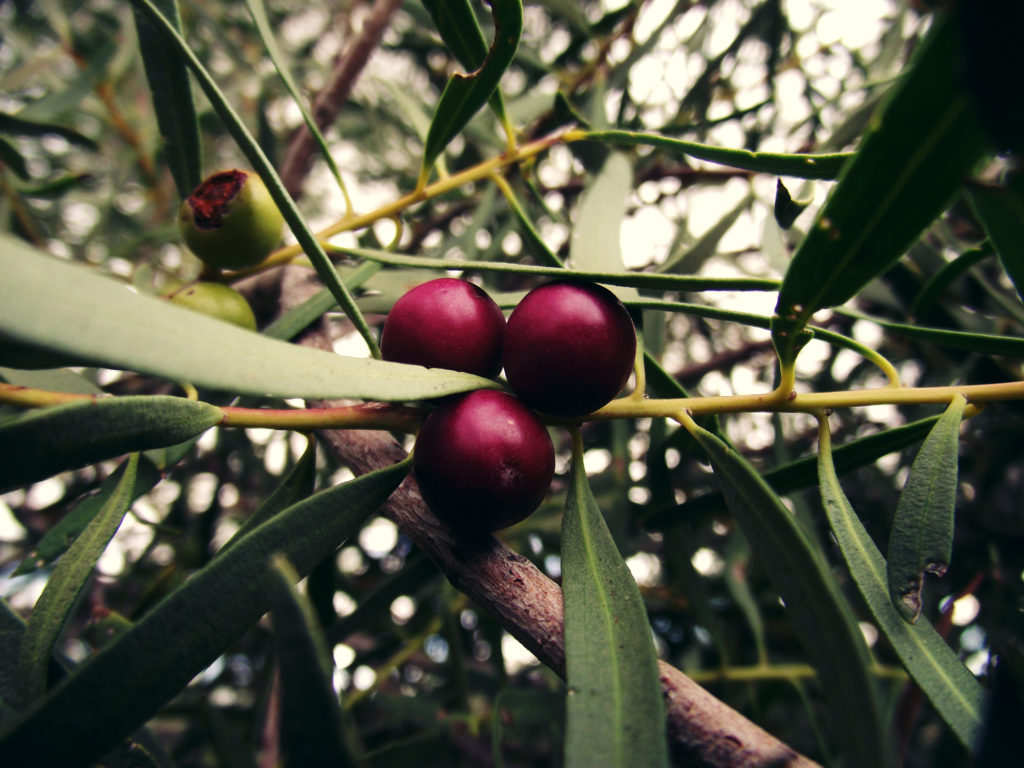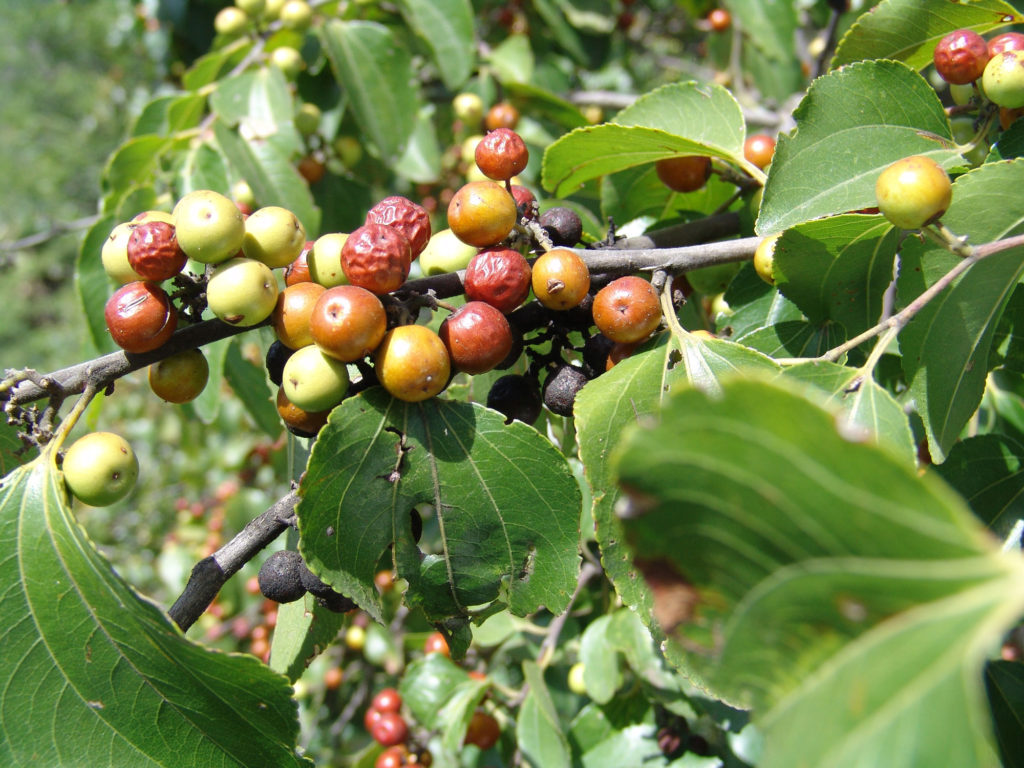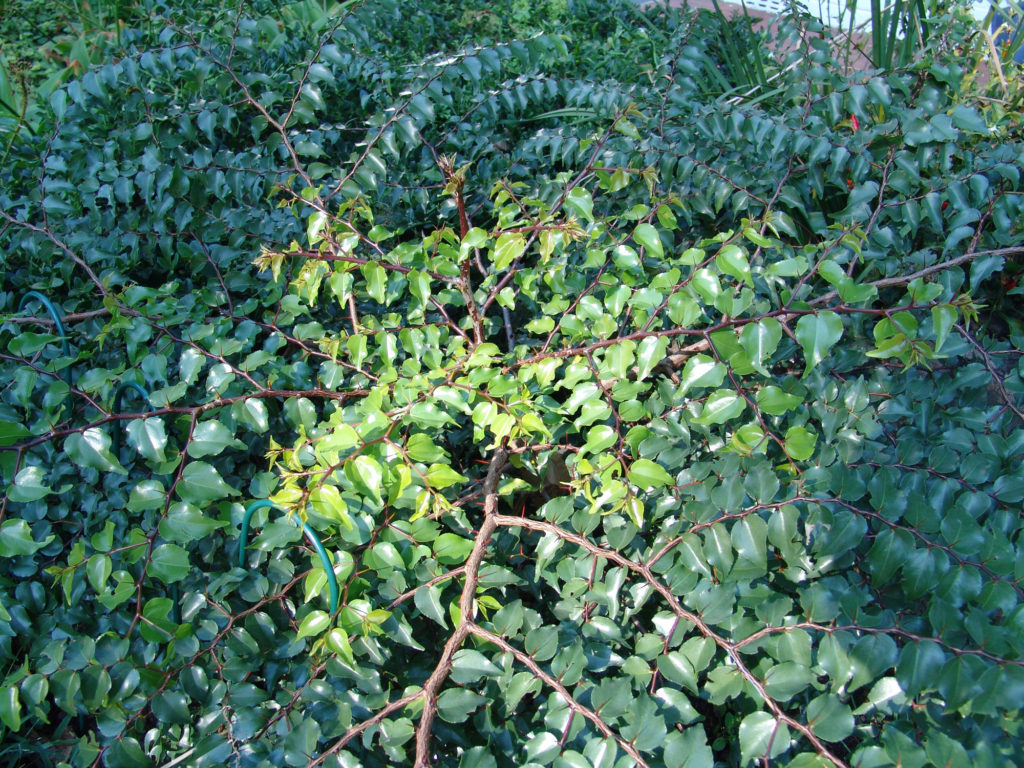With nearly 2 000 indigenous trees in South Africa, natural, endemic trees are a staple in any garden. Why not opt for 2017’s Trees of the Year?
Once established, even the rarest of trees can define your garden for decades. Every year, two trees are named as Tree of the Year in the lead up to Arbour Week. One common and one rare species are chosen to raise public awareness about the diversity of trees significant to the country. In 2017, South Africans will celebrate the ebony tree (Euclea pseudebenus) as the rare tree and buffalo thorn (Ziziphus mucronata) as the common tree.
Ebony tree
At a glance
Positions: Full sun.
Plant: Early spring.
Water: Drought resistant. Water once a week if planted in loamy clay or once every two weeks in sandy soil.
Size: 3–10 metres
Frost tolerance: Young plants are vulnerable to frost, so should be protected.

If it’s honey bees, water-wise trees and elegant draping shade you’re after, the ebony tree is ideal. This tree is fast becoming a popular addition to any garden, especially in small, dry gardens.
This drought-resistant tree thrives in harsh desert conditions and is suited to arid or semi-arid regions with long hot summers. It does, however, cope in both winter and summer rainfall areas. Many large specimens can be found in Augrabies Falls National Park and /Ai/Ais- Richtersveld Transfrontier Park.
“Ebony trees are found in abundance on the alluvial floodplains of the Orange River,” says Dr Hugo Bezuidenhout, vegetation ecologist at SANParks. “They prefer the floodplains because they get bursts of water, but not too regularly,” he says.
This shrub-like evergreen attracts birds, butterflies and bees. It is elegantly draped and seems out of place in the often-harsh environments in which it is found. Its large drooping branches, hanging like a skirt around the stem, offer sought-after shade.
The resemblance of the inner wood to the true ebony (Diospyros ebenus) is remarkable. Its wood is often used for chess boards and furniture, and as firewood. “The nucleus of the tree’s stem is black and looks burnt, which is where it gets its common name from,” says Bezuidenhout. It is also recognised by its greyish, rough bark.
The tree has long, and narrow blue-green leaves and its cream-coloured flowers appear between winter and spring. In late summer the green berry fruits turn black when ripe.

Interesting uses
In traditional medicine, the roots are used for treating toothache and headaches and the ripe fruits are also edible and have an astringent, sweet taste.
Growing tips
- Plant the trees in loamy clay soil.
- Young plants must be watered generously.
- If planted in loamy soil, however, be sure not to overwater. The trees do not like wet feet.
- As older specimens spread out in an umbrella shape, plant them where they will have space, away from walls and buildings.
Buffalo Thorn (or Hairy Buffalo Thorn) Ziziphus mucronata
At a glance
Positions: Lives happily in sun, shade and semi-shade.
Water: Water regularly until established. Water and efficient drainage are essential for seedlings.
Size: 3–10 metres
Frost tolerance: Very hardy and mostly frost resistant

For a hardy tree for any situation, opt for the hairy buffalo thorn. Also known as a blinkblaar-wag-‘n-bietjie, the tree does well in the summer rainfall areas of sub-Saharan Africa. These frost-resistant deciduous trees are found throughout South Africa, although they are not common in the Western Cape. A few truly magnificent specimens can be seen in Skukuza rest camp in the Kruger National Park.
The tree can be shaped as a medium shrub or left to develop into a tree. With their large thorny extensive branches, they make good hedges and natural walls. Their height provides good nesting positions for birds such as weavers.
“As it grows very tall, it is favoured by many creatures, which create an extensive ecosystem,” says Michele Hofmeyr, botanist at Skukuza Nursery.
The ovate leaves are glossy green, turning golden yellow in autumn. Their greenish yellow flowers emerge in dense clusters in early summer.
A carpet of the hard seeds is often found underneath the tree. “This results in new seedlings growing underneath the mother tree,” says Hofmeyr.
The tree has cultural significance. In Zulu culture, it is used in burial rites and is known to be planted on the graves of chiefs.

Interesting uses
The hairy buffalo thorn’s antifungal properties are widely used for medicinal purposes, such as treating stomach ailments, skin ulcers, chest problems, glandular swellings and many types of pain. Its fruits are edible, and its seeds are traditionally roasted as a coffee substitute.
Growing tips
- Seedlings should be planted in full sun, and require ample drainage.
- While the tree grows well everywhere, seedlings are less hardy and should be treated with care.
- Mulch well when planting initially. Continue to feed and water regularly to speed up the growing process.
- The trees can grow very large, and drop their thorny branches easily. Plant them in a more remote part of the garden not frequented by people and pets.
- The roots are not aggressive, but the tree still requires ample space.
- The canopy of the tree spreads widely. If aiming to maintain a shrub shape, prune it regularly.
- The tree can grow up to four metres in just four years.
- Water regularly in winter, and less often in summer.
- Fertilise just before the first spring rains.
- They prefer alluvial soil, and cope well in sandy, clay, and loamy soil.
